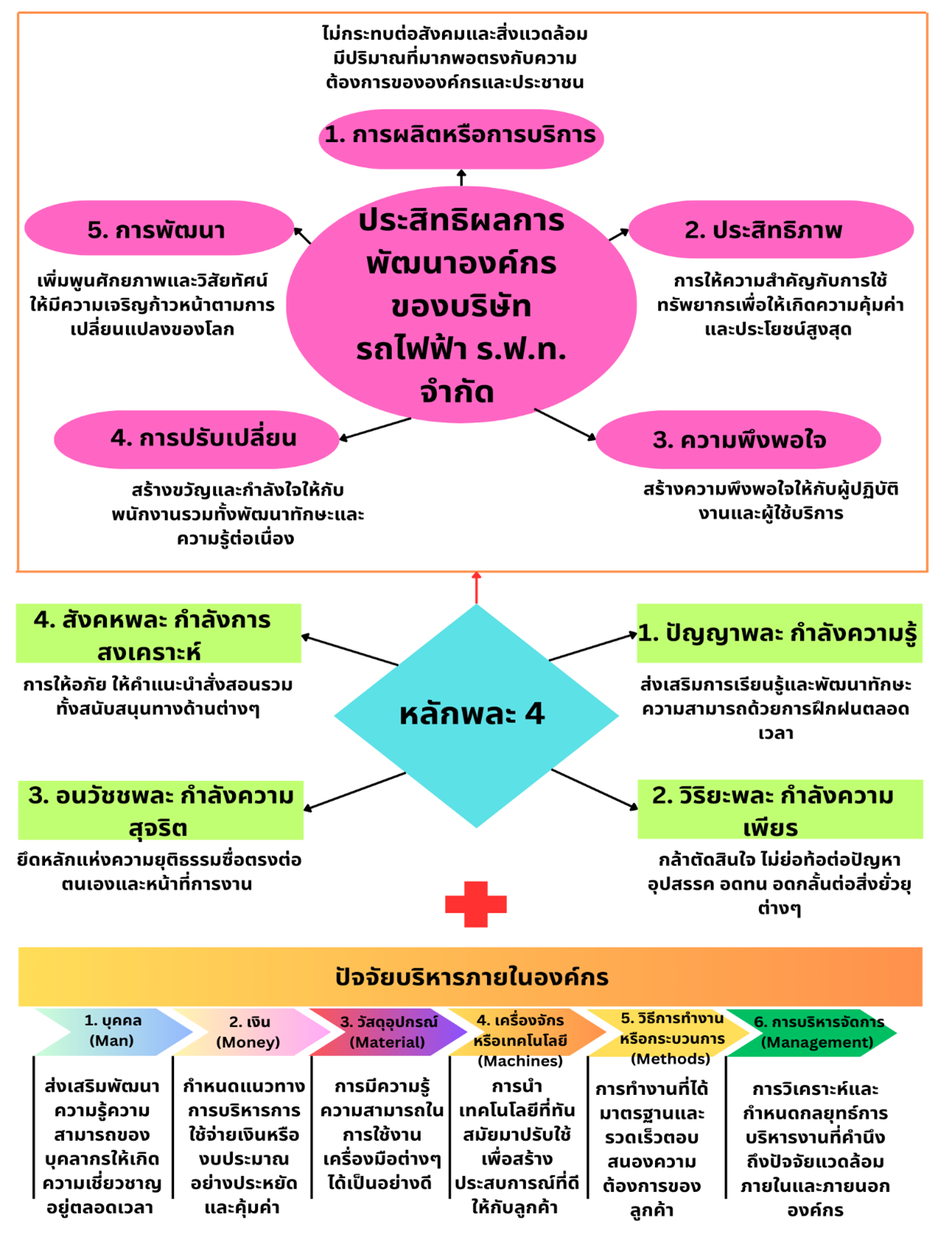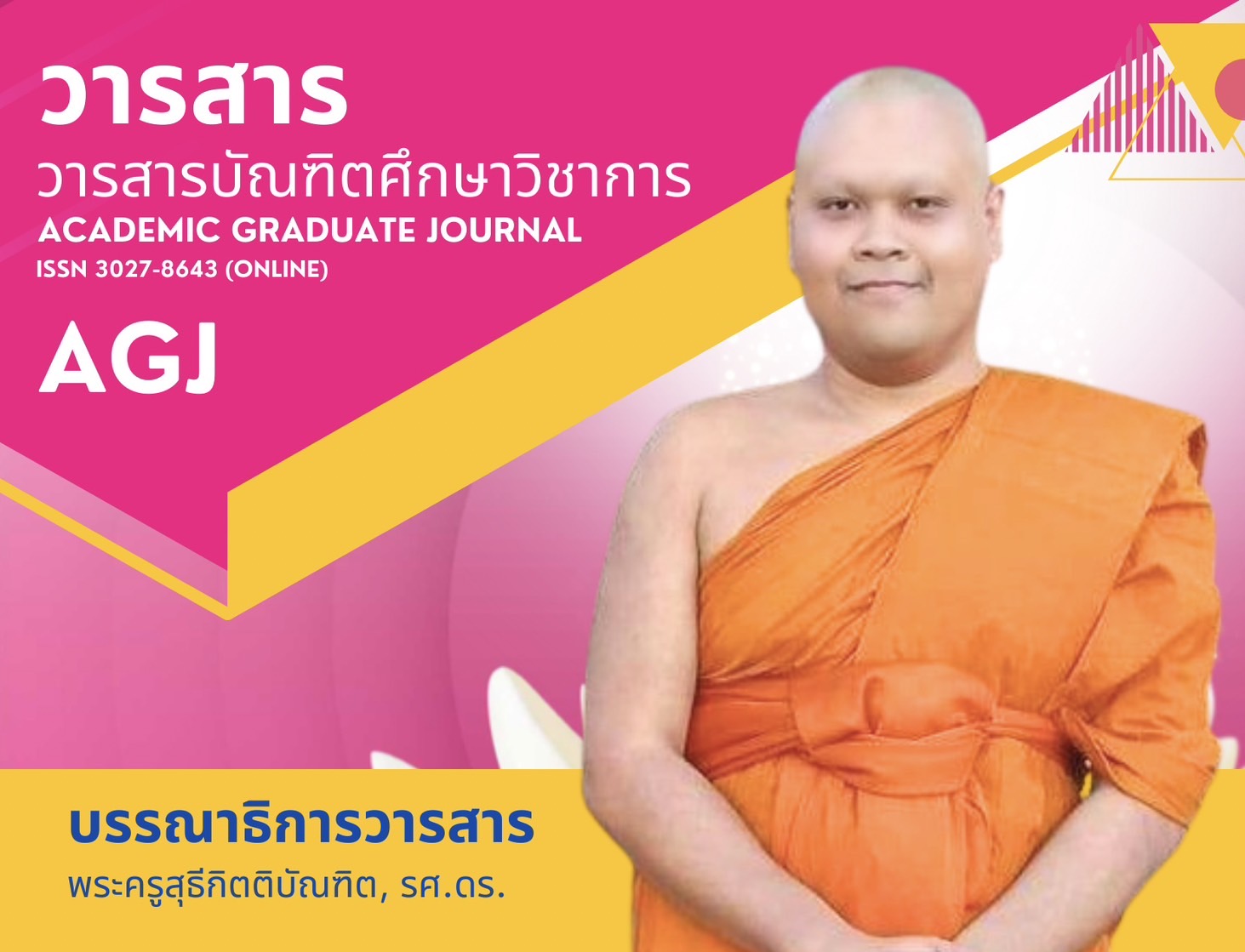BUDDHIST INTEGRATION FOR ENHANCING EFFECTIVENESS OF ORGANIZATIONAL DEVELOPMENT OF THE S.R.T ELECTRIFIED TRAIN COMPANY LIMITED
Keywords:
Buddhist Integration, Effectiveness, Organizational DevelopmentAbstract
The objectives of this research paper are 1. to study the effectiveness of organizational development, 2. to study the factors that affect the effectiveness of organizational development, and 3. to present an integrated Buddhist model to enhance the effectiveness of the company's organizational development. MRT BTS Limited (SRT) Conduct integrated research methods. Collect data with a sample group of company personnel. 229 people interviewed 18 photos or people divided into 5 groups and 10 specific group discussions. The research tools are questionnaires and interviews. Using both descriptive and inferential data analysis.
The research results found that 1. Overall organizational development effectiveness was at a high level, ranked by the average value as follows: development, followed by production or service, change, satisfaction, and efficiency. 2. Factors affecting organizational development effectiveness found that 1. Internal organizational management factors affect organizational development effectiveness of S.R.T Electrified Train Co., Ltd., including management, materials, equipment, work methods or processes, personnel, machinery, or technology. at the 0.05 level of significance. 2. The four powers significantly affected the effectiveness of the organization development of S.R.T. Electrified Train Company Limited, consisting of Sangkhaphala, Panyaphala, Anavajjaphala, and Viriyaphala, at the 0.05 level. 3. The Buddhist integration model to enhance the effectiveness of the organization development of S.R.T. Electrified Train Company Limited found that the four powers were integrated, namely, Panyaphala, Knowledge power, Viriyaphala, Perseverance power, Anavajjaphala, Honest power, and Sangkhaphala, Charitable power. Internal management factors were used as the basis for promoting the effectiveness of the organization development, consisting of people, money, materials, equipment, machines or technology, working methods or processes, and management.
References
คณะกรรมการนโยบายรัฐวิสาหกิจ. (2562). แจ้งมติคณะกรรมการนโยบายรัฐวิสาหกิจ ครั้งที่ 2/2562. เอกสารราชการด่วนที่สุด. ที่ กค 0805.4/2684. กรุงเทพมหานคร : สำนักงานคณะกรรมการ นโยบายรัฐวิสาหกิจ.
คณิตดา กรรณสูต. (2565). พุทธวิธีการบริหารจัดการองค์กรคุณภาพของบริษัทมหาชนจำกัด (ดุษฎีนิพนธ์ปรัชญาดุษฎีบัณฑิต สาขาวิชารัฐประศาสนศาสตร์). พระนครศรีอยุธยา : มหาวิทยาลัยมหาจุฬาลงกรณราชวิทยาลัย.
ณภัทร ปิณฑรัตน์. (2555). คุณลักษณะของผู้นำองค์กรตามหลักพละ 4 ในธุรกิจประกันภัย (รายงานวิจัย). พระนครศรีอยุธยา : มหาวิทยาลัยมหาจุฬาลงกรณราชวิทยาลัย.
บริษัท รถไฟฟ้า ร.ฟ.ท. จำกัด. (มปท.). เรื่อง บริษัท รถไฟฟ้า ร.ฟ.ท. จำกัด (รฟฟท.). เอกสารเผยแพร่, มปท.
บริษัท รถไฟฟ้า ร.ฟ.ท. จำกัด. (2567). เกี่ยวกับเรา, เกี่ยวกับโครงการ. สืบค้น 11 มกราคม 2657, จาก https://www.srtet.co.th/th/single-page/13.
ภูษิต วิเศษคามินทร์. (2563). ประสิทธิผลการนำนโยบายการแก้ปัญหาจราจรไปปฏิบัติของกองบังคับการตำรวจจราจร (หลักสูตรปรัชญาดุษฎีบัณฑิต สาขาวิชารัฐประศาสนศาสตร์). พระนครศรีอยุธยา: มหาวิทยาลัยมหาจุฬาลงกรณราชวิทยาลัย.
มหาวิทยาลัยมหาจุฬาลงกรณราชวิทยาลัย. (2539). พระไตรปิฎกฉบับภาษาไทย ฉบับมหาจุฬาลงกรณราชวิทยาลัย. กรุงเทพฯ: โรงพิมพ์มหาจุฬาลงกรณราชวิทยาลัย.
อภิวัฒน์ จ่าตา. (2564). การบริหารจัดการของรัฐในการส่งเสริมกัญชาเสรีเพื่อการแพทย์ทางเลือกของไทย (หลักสูตรปรัชญาดุษฎีบัณฑิต สาขาวิชารัฐประศาสนศาสตร์). พระนครศรีอยุธยา : มหาวิทยาลัยมหาจุฬาลงกรณราชวิทยาลัย.
Yamane, T. (1973). Statistic: An Introductory Analysis. (3rd ed.). New York: Harper and Row.







